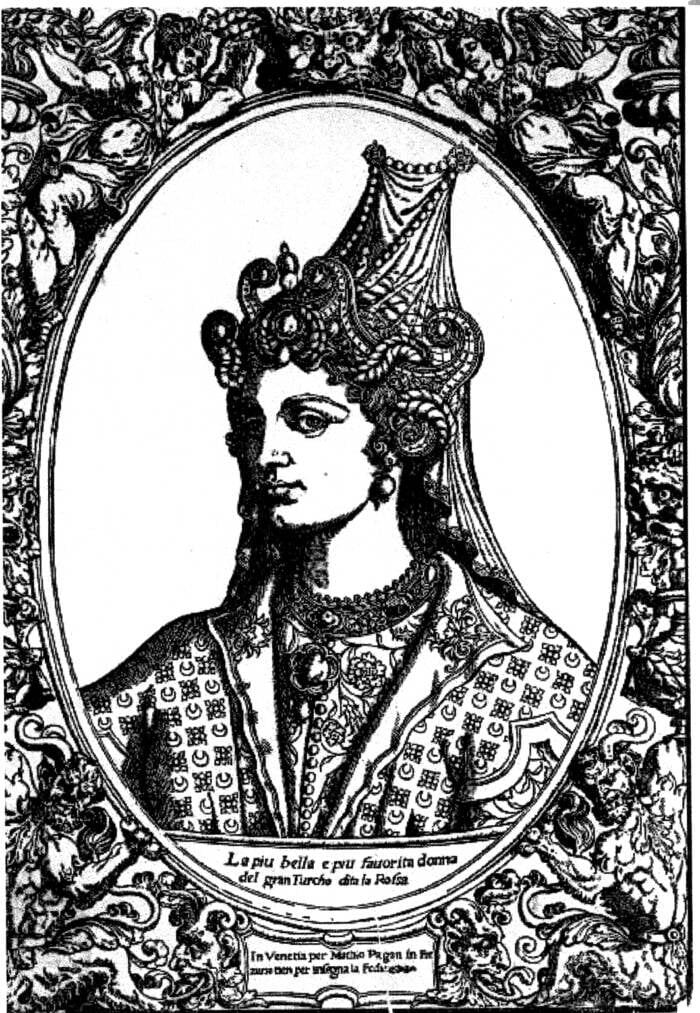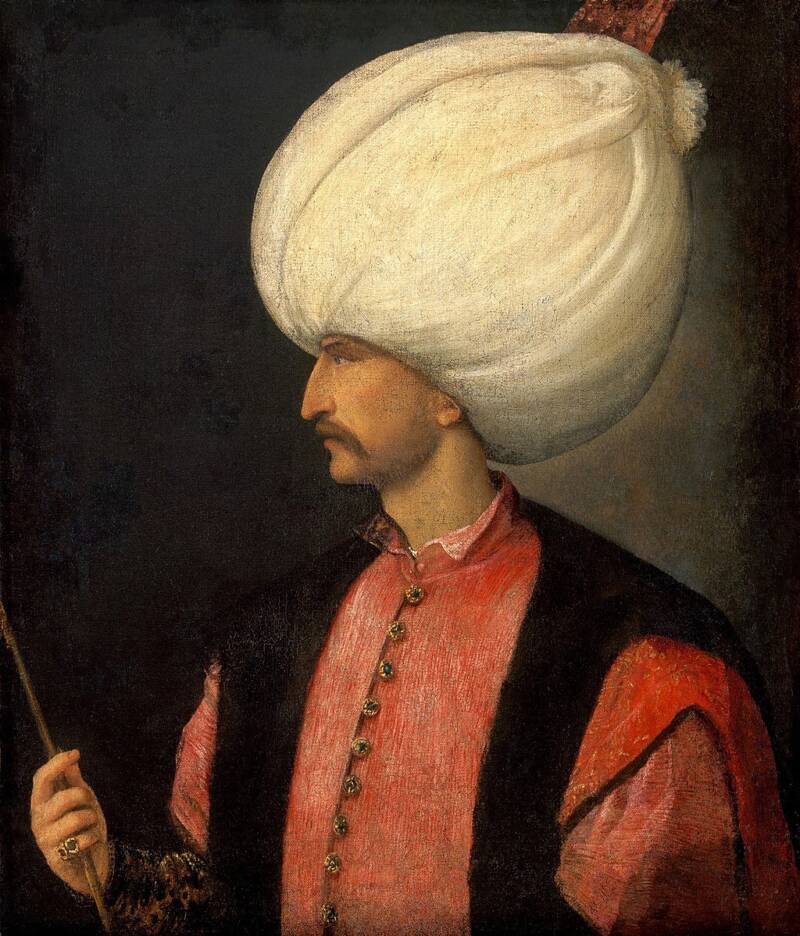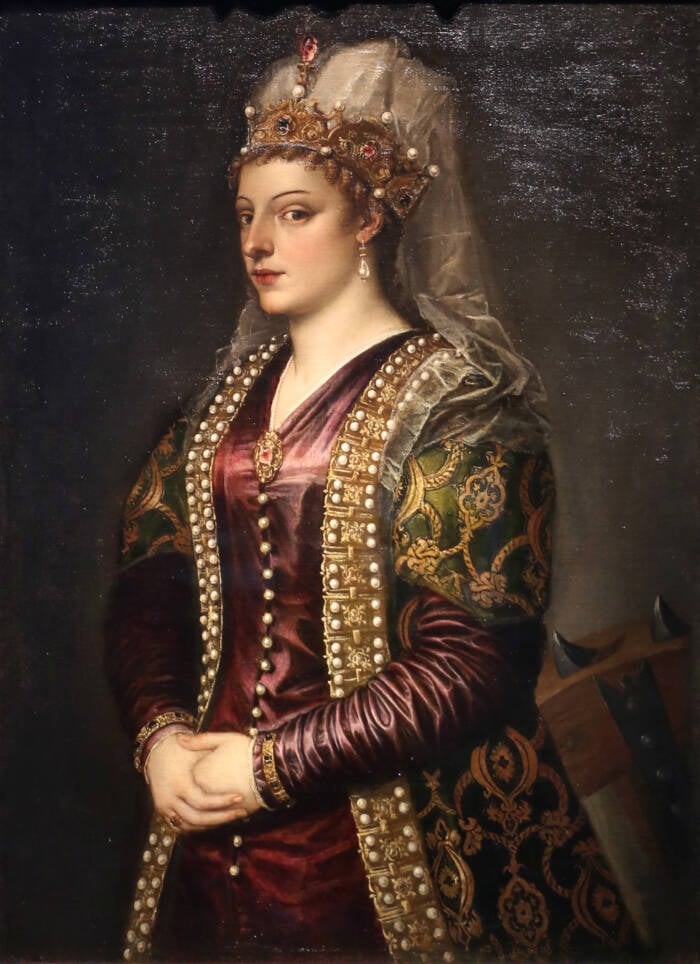Around 1533, the Ottoman sultan broke custom to marry his favorite concubine Hürrem Sultan — and she soon became the most powerful woman in the empire.
She was known by many names: Hürrem Sultan, Roxelana, Haseki Sultan. However, the most dangerous epithet applied to her was “witch” — and in a way, it was the truest of them all.
This 16th-century Ottoman queen bewitched her husband, Sultan Suleiman I, in a way rarely before seen in the male-dominated empire. The sultan’s love for her shaped the kingdom physically and politically, from razing and constructing palaces to carving out swaths of influence and forever changing the place of women in the Ottoman court.

Public DomainAn artistic rendering of Hürrem Sultan.
Hürrem Sultan’s legacy is even more impressive in that it began so humbly. She was born in what’s now Ukraine, kidnapped by Crimean Tatars during a slave raid, and forced to be a concubine.
From there, she captured the heart of Suleiman the Magnificent, rose above her circumstances, and became one of the most influential empresses in history. But masking this cunningness and love for power were an easy charm and captivating smile that earned her the title “the endearing one.”
The Early Life Of Hürrem Sultan
Hürrem Sultan was likely born Aleksandra or Anastazja Lisowska around 1505. Her family lived in Rohatyn (now part of western Ukraine), which was under Polish control at the time of her birth.

Public DomainThe Ottoman Empire represented a large swath of Europe and the Near East.
When she was still a child, sometime between 1512 and 1520, she was abducted by Crimean Tatars during a slave raid and taken to Constantinople. There, in the city where East meets West, she would encounter her destiny.
That destiny — and her future king — was crowned sultan in 1520. Known today as Suleiman the Magnificent, his moniker was well-earned.
Ruling over a golden age in Ottoman history, Suleiman is remembered for building up the naval presence, becoming a more or less permanent military thorn in the side of Christian Europe. He also ushered in the capital’s transformation from medieval Constantinople to modern Istanbul, all while reigning over a vast empire of incredible wealth and millions of subjects.
However, he was soon to fall for an Orthodox slave girl who would lead him to break with countless Ottoman customs and traditions in the name of love.
The concept of a harem had a long history in the Ottoman Empire. These women who lived there were legitimately tied to the household of the sultan, but they were not considered wives or queens. That was reserved for noble-born foreigners. As the empire grew, conquered women were continually added to the harem. There, they became concubines of the sultan.

Public DomainA woodcut of the future wife of the sultan.
It’s unknown exactly how Hürrem Sultan came into this position, but according to some sources, she was given to Suleiman as a coronation gift. She soon rose to become his favorite concubine, and by 1521, he had eyes only for her.
How A Young Concubine Became An Ottoman Empress
Physical descriptions of Roxelana vary from courtly prose of her stunning beauty to more practical assessments that say she wasn’t particularly attractive aside from her petite frame and strawberry blonde hair. However, like Cleopatra, it was her innate charm and zest for life that set her apart from the other women of the harem.

Kunsthistorisches Museum/Wikimedia Commons.Suleiman the Magnificent was totally besotted by Hürrem Sultan.
She used this to her advantage, playing up her exoticism with bright and unusual costumes. Suleiman began to open up to this strange girl, in part due to his reported fascination with Northern European cultures. Their friendly chats grew more intimate until, one day, the Sultan left his scarf on her shoulder. In the harem, that meant one thing: He wished to claim his rights to her bed.
It was Suleiman who started calling her Hürrem, meaning “the joyful and endearing one.” Other European ambassadors referred to her as Roxelana, which meant “Ruthenian woman,” as the Slavic area she hailed from was called Ruthenia at the time.
Hürrem Sultan immediately rose from the lowest rung of the harem, a step towards her stratospheric rise. According to The Imperial Harem, a Venetian page named Luigi Bassano wrote of Roxelana, “[S]uch love does [Suleiman] bear her that he has so astonished all his subjects that they say she has bewitched him.”
Whether bewitched or besotted, the Suleiman the Magnificent transmitted his love for Hürrem Sultan through poetry, once writing, “My most sincere friend, my confidante, my very existence, my Sultan, my one and only love… The most beautiful among the beautiful.”
At the time, it was customary for sultans to end their relationship with any given concubine once she had birthed one of his sons. However, Suleiman and Hürrem Sultan had six children together, including five boys. And around 1533, Suleiman broke tradition further by marrying Roxelana. This made her the first Haseki Sultan, a title created for her and later used to describe the chief consorts of future Ottoman sultans.
This new position was not without drawbacks. A concubine who was formerly higher-ranking than Hürrem Sultan is said to have spat at the new queen: “Traitor, sold meat, you want to compete with me?”
Her enemies also lived outside of the harem. The sultan’s close friend became a rival for power, so Hürrem Sultan set about undermining him, ultimately planning his assassination. Even her own stepson was not spared her ambition. In 1553, Suleiman’s eldest son outranked the children he had with Hürrem Sultan. With the help of another courtier, she allegedly staged a coup attempt in the heir’s name, which, when discovered, caused the sultan to have his own son executed.
Hürrem Sultan’s legacy was secured.
Hürrem Sultan: One Of The Most Powerful Woman In Ottoman History
Outside of courtly chess, Roxelana was a force of altruism. She founded public fountains, mosques, schools, various charities in the poorest neighborhoods of the capital, and food kitchens said to have fed 500 people twice daily.
She similarly acted as a diplomat when her husband invaded Baghdad, assuring the royal family there that the objective of the campaign was not “destroying the lands of the Muslims” but “repairing the houses of religion and adorning the lands of God’s law.”
Hürrem Sultan lived into her 50s, dying in 1558 after a lingering illness. Suleiman the Magnificent laid his beloved wife to rest in a magnificent mosque. Following the sultan’s own death nearly a decade later, Hürrem Sultana’s son Selim II took the throne.
Roxelana left behind a legacy as complicated as the woman herself. Unpopular in her own time and considered a meddler, a sorceress, and a schemer, today, her legacy has been reevaluated. She’s now hailed as the founder of the “Sultanate of Women,” a time when the Ottoman Empire respected the power of female royals.

Uffizi Gallery/Wikimedia CommonsOfficially known as the Portrait of Caterina Cornaro, some historians claim that this Titian painting actually portrays Hürrem Sultan.
She also cast a spell on Western artists, who created real and imagined likenesses of the Ottoman queen. Some historians claim that one of these hangs in the Uffizi in Florence, painted by none other than Renaissance master Titian. Originally considered a depiction of Saint Catherine, the subject is in luxurious clothes with skin as pale as her dangling pearls, a headdress hiding auburn tresses, and her otherwise stern features playing into a faint smirk.
After reading about Hürrem Sultan, discover the legend of Aimée du Buc de Rivéry, the French heiress lost at sea and found on the throne of the Ottoman Empire. Then, learn about the Janissaries, the Ottoman Empire’s elite military force.





